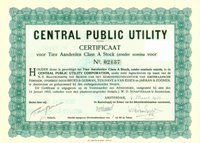 Simply put: Rebroadcasting serices are needed when a radio signal does not reach somewhere someone wants it to go. This may be inside it's protected contour... or not. A radio station will normally file for, and build a certain number of repeaters to fill in it's "soft spots." This is particularly true in mountainous areas. But sometimes a town wants a radio or TV signal more than the stations wants to reach it.
Simply put: Rebroadcasting serices are needed when a radio signal does not reach somewhere someone wants it to go. This may be inside it's protected contour... or not. A radio station will normally file for, and build a certain number of repeaters to fill in it's "soft spots." This is particularly true in mountainous areas. But sometimes a town wants a radio or TV signal more than the stations wants to reach it.So the solution is a public utility.
For example: The Pitkin County FM/TV Department maintains and operates a mountain top translator system that rebroadcasts FM and TV signals to residents of Pitkin County, and other portions of the Roaring Fork Valley in Colorado.
The funding for this service comes out of their property taxes. It works out to about $13 per year per home. Translator signals are considered a "fill-in" service. Pitkin county Rebraodcasting fdoes a little FCC paperwork and maintaines a set of 10 watt repeaters to serve the Pitkin county residents with radio and television. Of course in a mountainous regiojn like this a roof top antenna is often still necessasary. They rebroadcast the following FM radio stations: KAJX, KDNK, KJYE, KLOV, KNFO, KSNO, KSPN, KVOV, and KRVG. It's not a full radio band, but it's better than nothing. This is in addition to any repeaters these stations already operate on their own. KDNK for example already has 5.
 A more common use for rebroadcasting services is in tunnels. Your'e driving, you go into the tunnel. The AM stations flicker off immediately, then after a few hundred yeards, even the strongest FMs are gone as well. But a small translator will fix that. The leader in this area is Canam Technology Inc. (CTI.) They pioneered rebroadcast technology in 1962, developing a solution for the Caldecott Tunnel, in Oakland, California. Their hardware is used in highway tunnels, building and subway systems all over America, even the brand new Boston Tunnel.
A more common use for rebroadcasting services is in tunnels. Your'e driving, you go into the tunnel. The AM stations flicker off immediately, then after a few hundred yeards, even the strongest FMs are gone as well. But a small translator will fix that. The leader in this area is Canam Technology Inc. (CTI.) They pioneered rebroadcast technology in 1962, developing a solution for the Caldecott Tunnel, in Oakland, California. Their hardware is used in highway tunnels, building and subway systems all over America, even the brand new Boston Tunnel.http://www.canamtechnology.com/ing/index.html
But a true innovation it is not. A similar principle begat what we not call cable TV. In 1948 in the mountainout Pensylvania burg of Mahanoy City John Walson was pissed that his TV got bad reception of Philly stations. Mr. Walson climbed utility pole on a local mountain top and stuck an antenna on it. He ran a cable town the mountain to his TV and viola, he got a better signal.
 Walson owned a TV repair shop and ran the cable all the way down to his shop using some modified signal boosters. By June of that year his customers were asking him to hook up the cable to their homes along the cable path. It was nation’s first CATV system.
Walson owned a TV repair shop and ran the cable all the way down to his shop using some modified signal boosters. By June of that year his customers were asking him to hook up the cable to their homes along the cable path. It was nation’s first CATV system.John Walson has been lucky enough to be recognized for this innovation in his lifetime. he was recognized by the U.S. Congress and the National Cable Television Association as the founder of the cable television industry, the first cable operator to use microwave to import distant television stations, and even the first to distribute pay television programming. it became SECV: http://www.secv.com/




No comments:
Post a Comment